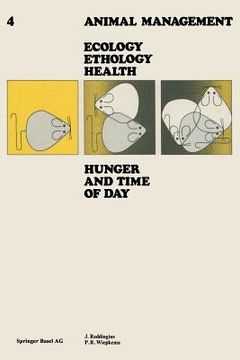Compartir
hunger and time of day (en Alemán)
P. R. Wiepkema
(Autor)
·
Reddingius
(Autor)
·
Birkhauser
· Tapa Blanda
hunger and time of day (en Alemán) - Reddingius ; Wiepkema
$ 91.450
$ 127.010
Ahorras: $ 35.560
Elige la lista en la que quieres agregar tu producto o crea una nueva lista
✓ Producto agregado correctamente a la lista de deseos.
Ir a Mis Listas
Origen: Estados Unidos
(Costos de importación incluídos en el precio)
Se enviará desde nuestra bodega entre el
Viernes 17 de Mayo y el
Martes 28 de Mayo.
Lo recibirás en cualquier lugar de Chile entre 1 y 3 días hábiles luego del envío.
Reseña del libro "hunger and time of day (en Alemán)"
In constructing models for the explanation and prediction of feeding behaviour, it has been attempted to define the state of the animal in terms of caloric defi- cit and amount of time spent eating already. These models of feeding behavior contain a negative feedback loop (caloric deficit induces feeding, which reduces deficit and increases satiation, which in turn checkes feeding) and a positive feedback loop (eating, once started, tends to persist). But it is not yet clear how the day-night rhythmicity which animal behavio are known to possess, should be incorporated in a model. In order to make progress, data on the rhythmicity of feeding behavior, and the interplay between caloric deficit and time of day, are needed. A survey of important data from the literature concerning feeding rhythms in rats and mice is given. Different methods for measuring food intake and/or behavior closely related to feeding as a function of time have been used; each of these methods suffers from serious drawbacks. In general, these animals eat more during the dark period of the day than during the light period. With rats, very often two maxima occur, one just after the onset of dark, and another just before the onset of light. Meals taken during the light period by rats appear to be smaller on the average than during the dark period, and the reverse holds for pauses between meals.
- 0% (0)
- 0% (0)
- 0% (0)
- 0% (0)
- 0% (0)
Todos los libros de nuestro catálogo son Originales.
El libro está escrito en Alemán.
La encuadernación de esta edición es Tapa Blanda.
✓ Producto agregado correctamente al carro, Ir a Pagar.

